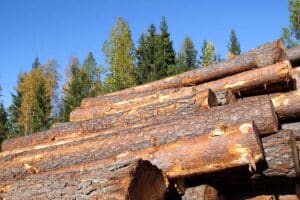Investors make, or don’t make, decisions on how to allocate capital and other resources based on their understanding of the current situation. Without understanding the facts on the ground or how things work, it becomes difficult, if not impossible, to plan and strategize for the future. We must confirm the facts as best as possible given the time and resources available, get varying points of view on what they mean, think for ourselves what makes sense – is this operable? Doable? Actionable? Viable? – and if we remain unsatisfied with where we are, get back to getting more data and viewpoints.
Common Errors When Evaluating Timber Markets
We all come to the table with biases and preconceptions when considering investments. If we are new to timber, we may think of spotted owls or Paul Bunyan before recognizing that the industry comprises, for the most part, experienced individuals who love forest resources. That said, folks make mistakes when making decisions. Common errors and sources of resistance when confronting the facts include:
- Failing to consider the view from the other side of the table. In forestry, when we own something – when we buy land and grow trees – we tend to see things from that point of view. And yet owning timberland is but one side of a two-sided equation. What does a mill see? When a forest products firm thinks about building a mill, what does it look for? Understanding this helps us assess timberland values and timber prices and forest management strategies. Conclusions from this type of analysis and research are relative. It’s a constant comparison of one market to another, of one region to another, GIVEN an assumption about the economy.
- Imposing rigid projections for the economy. Nobody forecasts the economy well; it’s a hard place to create value. For capital budgeting and investment strategies in forestry, prioritize understanding how THIS local timber market or THAT local wood basket will perform relative to every other given an assumption about the economy. Massive economic growth? “These timber markets are positioned to outperform those.” Brexit? “Those markets would be affected this way, and those timber markets that way.” And so it goes.
- Forgetting to test opinions and data sources. When thinking about information and the situation, consider the source. Who is telling you this and where do they get their information? And how did their previous opinions or forecasts play out? Very few people I know have a process for testing their own ideas and assumptions, or testing and thinking about the data and information they hear from others.
- Creating goals via fiat rather than by analysis. There is a difference in pushing for stretch targets and disregarding the projections from your team and replacing them with a decree of what they should be. I have heard too many times executives say their direct reports sandbag their budgets and expectations, and that they need to be pushed. Well who made them sandbaggers in the first place? (If that’s even true.) Padding the numbers is a response to the organizational environment. In most cases, it’s a culture that punishes missed numbers rather than risk taking. As an approach, this is totally legitimate, but just understand what you have, why you have it, and how this lines up relative to what you actually want from your team, career and portfolio.
At the end of the day, be systematic when collecting the facts and organizing them in ways that bring to the forefront an understanding of how things work before investing timber. Understand how to understand and frame the current situation. [That was not a Rumsfeldian typo.] While everything may not look like a forestry situation or timber market, few situations are that unique. Folks either know what they are talking about or they don’t; the numbers either make sense, or they don’t. Have the confidence and courage to know, and call out, the difference.
This content may not be used or reproduced in any manner whatsoever, in part or in whole, without written permission of LANDTHINK. Use of this content without permission is a violation of federal copyright law. The articles, posts, comments, opinions and information provided by LANDTHINK are for informational and research purposes only and DOES NOT substitute or coincide with the advice of an attorney, accountant, real estate broker or any other licensed real estate professional. LANDTHINK strongly advises visitors and readers to seek their own professional guidance and advice related to buying, investing in or selling real estate.










Add Comment